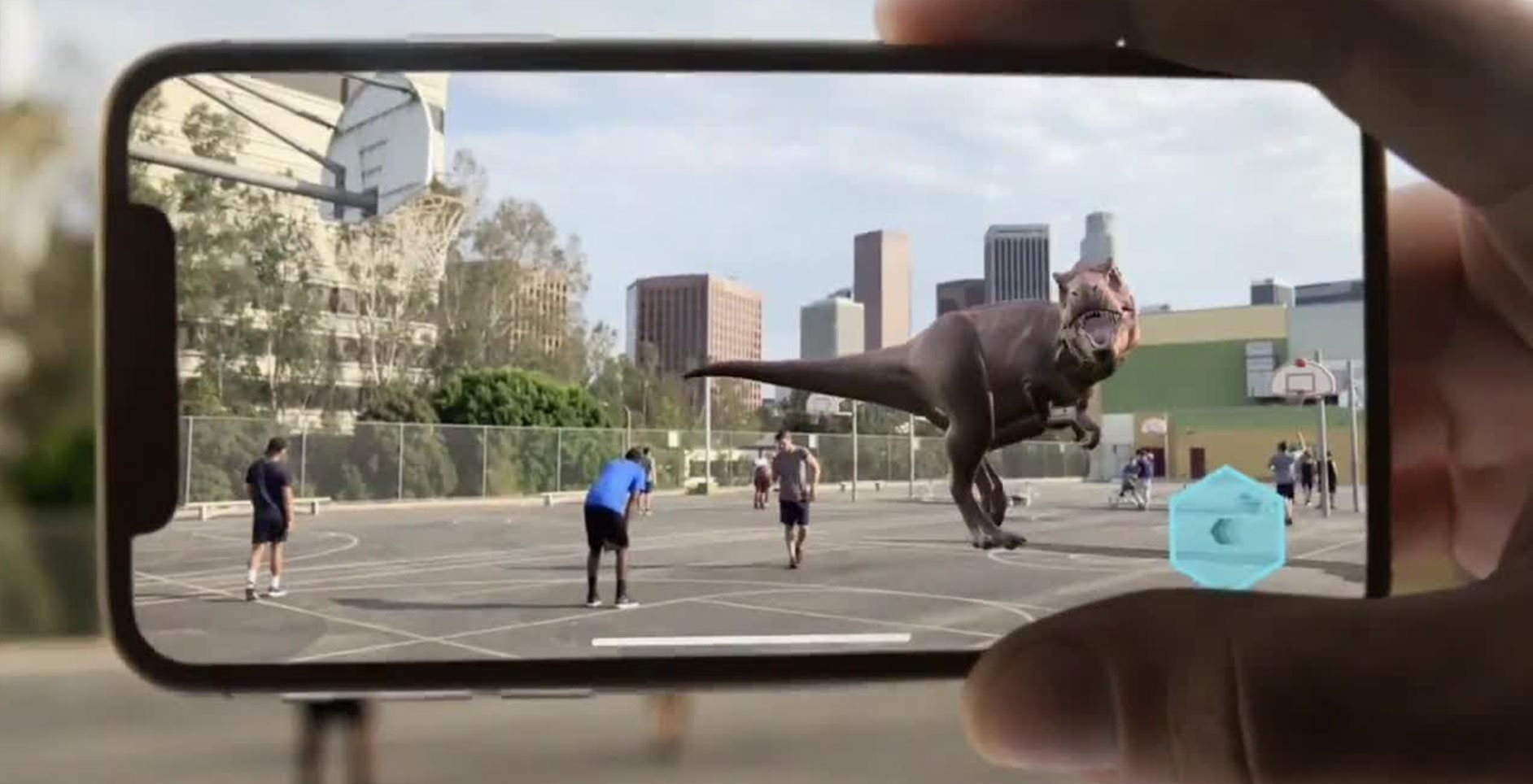Some years ago, prior to the Oculus Rift launching, most of us were excited to see what the first generation of virtual reality technology could do for gaming. Immersing yourself in a world with no distractions at play sounded so damn exciting, and don’t get me wrong — it still does. That said, it’s hard to argue that the first generation of VR headsets have been anything more than disappointing, thanks to high pricing and a limited range of games to play.
Rather than tackling this new technology head on, Apple have instead elected to dabble in augmented reality gaming. After spending some time with ARKit, I’m slowly coming around to the idea that this technology has real legs — and a good chunk of us already have the equipment to use it. If you’ve played Pokémon GO at any point in your life, you’d have already experienced AR in action. The tech — which uses your phone’s camera and the real world to generate digital imagery within — has been around for quite a while now. And following the official launch of Apple’s ARKit technology last year at the Apple Worldwide Developers Conference in June, the company has given developers the tools to incorporate AR into their games with relative ease. Subsequently, augmented reality experiences have boomed on the app store, with around 2,000 ARKit-enabled apps now available to download and try.
If you’ve played Pokémon GO at any point in your life, you’d have already experienced AR in action. The tech — which uses your phone’s camera and the real world to generate digital imagery within — has been around for quite a while now. And following the official launch of Apple’s ARKit technology last year at the Apple Worldwide Developers Conference in June, the company has given developers the tools to incorporate AR into their games with relative ease. Subsequently, augmented reality experiences have boomed on the app store, with around 2,000 ARKit-enabled apps now available to download and try.
The biggest question, of course, is if these apps are any good. Generally speaking, I’m not one to play many mobile games at all, and while I appreciate what’s happening in the virtual and augmented reality spaces and can recognise the potential there, I almost always prefer conventional methods of gaming. However, my experience with AR has been really positive — there’s something really neat about spawning a digital dragon on a real table and interacting with it, or walking about catching Pokémon in the real world. And yeah, you might get some weird glances from passersby, but the experiences afforded by this kind of tech are as intriguing as they are fun.
So far, I’ve spent majority of my time with four different AR experiences, all developed by Aussie devs sprawled out across the country. The first of these experiences was AR Dragon, one of the top free apps in the AR Games section of the App Store. Developed by Melbourne-based PlaySide Studios, the game is a play on the Tamagotchi games, where you nurture a pet through multiple life stages and interact with them in different ways. As the name suggests, AR Dragon has you take care of a dragon from its infant stages all the way up to a grown adult, ensuring it’s fed, is happy, and the like — it’s all very cute. I can see the appeal here, too, especially if you grew up with a Tamagotchi or have played through these kinds of experiences before. It works well in the AR space, and fits in with the tech at play.
The first of these experiences was AR Dragon, one of the top free apps in the AR Games section of the App Store. Developed by Melbourne-based PlaySide Studios, the game is a play on the Tamagotchi games, where you nurture a pet through multiple life stages and interact with them in different ways. As the name suggests, AR Dragon has you take care of a dragon from its infant stages all the way up to a grown adult, ensuring it’s fed, is happy, and the like — it’s all very cute. I can see the appeal here, too, especially if you grew up with a Tamagotchi or have played through these kinds of experiences before. It works well in the AR space, and fits in with the tech at play.
Halfbrick Studios’ AR thriller Shadows Remain was the most intriguing app and it had me hooked from the moment I laid eyes on it. Being someone who has a fairly big appreciation for thriller and horror experiences, the team — who are well known for mobile hits like Fruit Ninja and Jetpack Joyride — conjured this one up in a game jam following ARKit’s announcement.
A hidden object game, Shadows Remain uses AR to create a miniature house of sorts, and you’ve got to find and interact with objects sprawled around the environment to progress the story. It’s got voice acting as well, and the sound and ambience of it all really took me by surprise. It felt like a high quality experience, and is different enough from normal gaming experiences to make it an intriguing premise in the AR space. If there was one title from the day that convinced me of the potential surrounding AR games, it was this one. Subsequent play sessions with it over the weekend have been positive too, and I really enjoyed what the team have designed.

The final two games I tried out were Mammoth Mini Golf AR by Perth-based developer Ezone, and Let’s Stack AR by 11-year-old Yuma Soerianto (yep, 11!). Both were fun in their own way, with the former allowing you to try out mini golf in AR and the latter having you play a stacker game in the real world. Something I found especially neat about Let’s Stack AR was that it gives you stats and comparisons to real-world things based on how high you managed to stack blocks, which was a cool little touch.
Another game that I particularly recommend is Ticket to Earth’s AR mode. A well-loved strategy game, being able to play it in AR was a really neat experience, and again illustrated the potential of augmented reality. Some apps were a bit finicky and didn’t necessarily work all that well in AR, but the apps that did impress me made use of AR in fun and enjoyable ways — making their experiences feel different enough from normal gaming, and that was a key element for me to see the potential of what’s on offer here.
So yeah, AR is pretty damn cool. It might not take your breath away quite like it did with me when I first watched a virtual Spyro-looking dragon pop up in front of me, but the tech here is certainly impressive. Some apps — like AR Dragon, Tickets to Earth, and Shadows Remain — are fantastic examples of what the technology can do for games. By adding to the gaming experience rather than taking things away or altering them too much, you don’t feel like you’re playing a second-grade afterthought like a lot of what’s on offer in virtual reality currently, allowing AR to stand out on its own in a different kind of way. And I’m really intrigued to see it continue to develop overtime, not just from a gaming perspective either, but also in terms of educational and historical experiences as well.
And hey, if the 13 million AR app downloads since September last year are anything to go by, we could well be set for a fascinating few years ahead.



